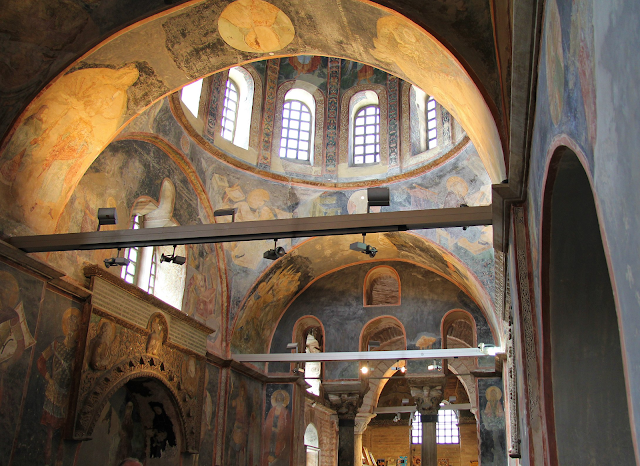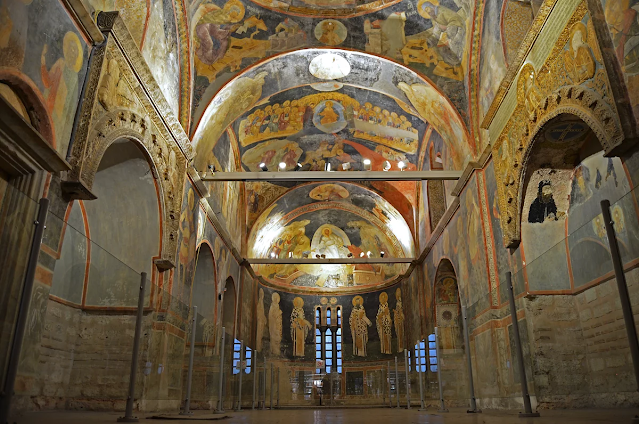Hagia Eirene is said, in fact, to be older than Hagia Sophia in its origins, being originally completed in the fourth century and considered amongst the first Christian churches of the city. Just as in Rome itself, churches of this antiquity have seen their share of restorations over the centuries, in the first instance being rebuilt in the year 548 by the Emperor Justinian after it had been burned down.
The interior is set into a fairly typical Roman basilica plan but it is also of historical interest insofar as it contains remnants of the art of the Byzantine iconoclastic era. The apse finds itself decorated solely by a very plain cross.
One can see here the classic arrangement showing the columns going down the nave, with two outer aisles, in typical basilica fashion. Within the apse, beneath he plain, iconoclastic era cross is the synthronon where the bishop and his clerics would be seated. Before it would have been an altar with a ciborium, likely separated off from the nave by a balustrade.
We mentioned there were three churches in Constantinople dedicated to a divine attribute. Regrettably the third, Hagia Dynamis, seems to be lost to the mists of time. The same may be said of another renowned Christian church of Constantinople, Holy Apostles, which was already by the time of the Ottoman conquest falling into ruin and would ultimately be demolished. Our only sense of it now comes from illuminations such as this one.
 |
| The relics of St. Luke |
After the fall of Constantinople, Holy Apostles was used for a time as the seat of the Ecumenical Patriarch before switching only a few years later to the Church of the Theotokos Pammakaristos (Church of the All Blessed Mother of God) and fortunately this one remains. This church is thought to have been built in the eleventh or twelfth century, right around the time of the Great Schism. In 1591 it was converted into a mosque but the structure still stands to this day.
In fact, despite having been converted to a mosque, it contains one of the most significant collection of mosaics from the Byzantine period within Constantinople.
Originally the interior had marble revetments that were covering the lower walls, but these have for the most part been removed. The interior mosaics contains various figures, most prominently Christ the Pantocrator as well as the Blessed Virgin, St. John the Baptist and various Old Testament prophets.



















_-_P1030447.jpeg)

























